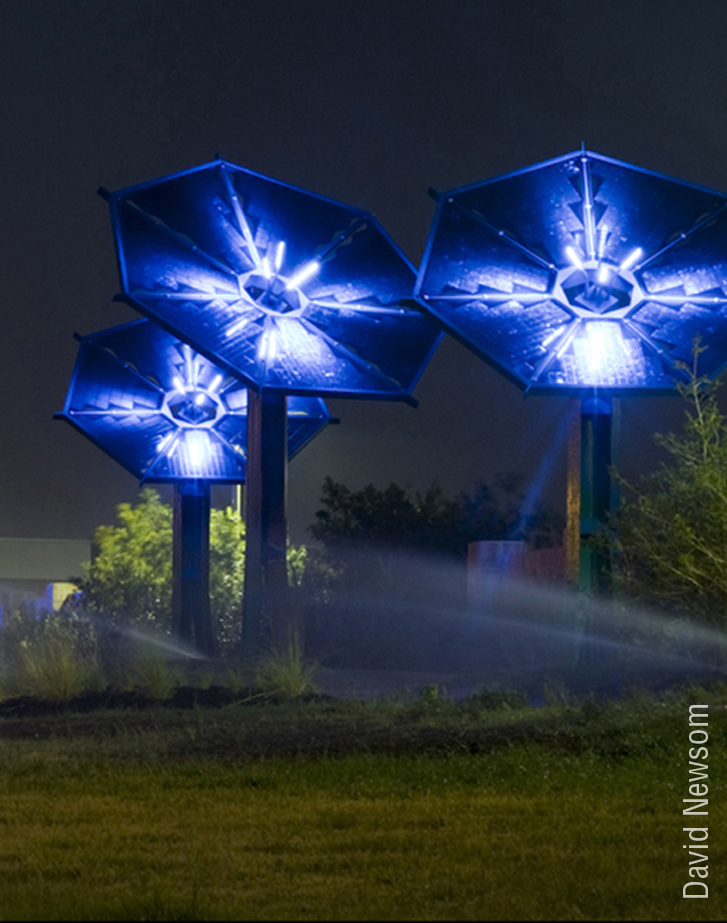Nancy Cohen’s art magnificently tells the story of the urban waterway’s struggle to survive. Today, building on a decade of powerful works, she brilliantly depicts the delicate balance reached by two widely different coastlines: Eastport in Maine and Samana Bay in the Dominican Republic.
Almost 1800 miles apart, the two regions share striking similarities and unique problems. Eastport, the easternmost city in the United States, is a deep water commercial port on the Bay of Fundy, widely considered to be one of North America’s most impressive natural wonders. Relatively isolated – even for a fishing community – Eastport is Maine’s least populous city, home to fewer than 1,400 people.
Eastport abounds, however, in ocean resources. The deepest port on the East Coast, it boasts dramatic 26-foot high ocean tides. Pounding ocean waves keep the harbor ice-free year round, adding to its value as a port.
In the 1800s, the heyday of its economic prowess, Eastport was a boatbuilding, lumber, fishing, and sardine canning center. It was the country’s second largest trading city, only surpassed by New York City. As fisheries declined, so did economic opportunity, leaving Eastport with a dwindling population, high unemployment and disproportionate elderly poverty rates.
The remnants of Eastport’s industrial past are still visible in the debris left on the tidal flats at low tide. Brick fragments from long-abandoned waterfront factories and contemporary plastic wastes wash up on shore, often covered by intricate strands of seaweed. As nature erases the tracks of humans, the tidal flats retain a mesmerizing beauty, drawing artists and tourists to Eastport’s shores.
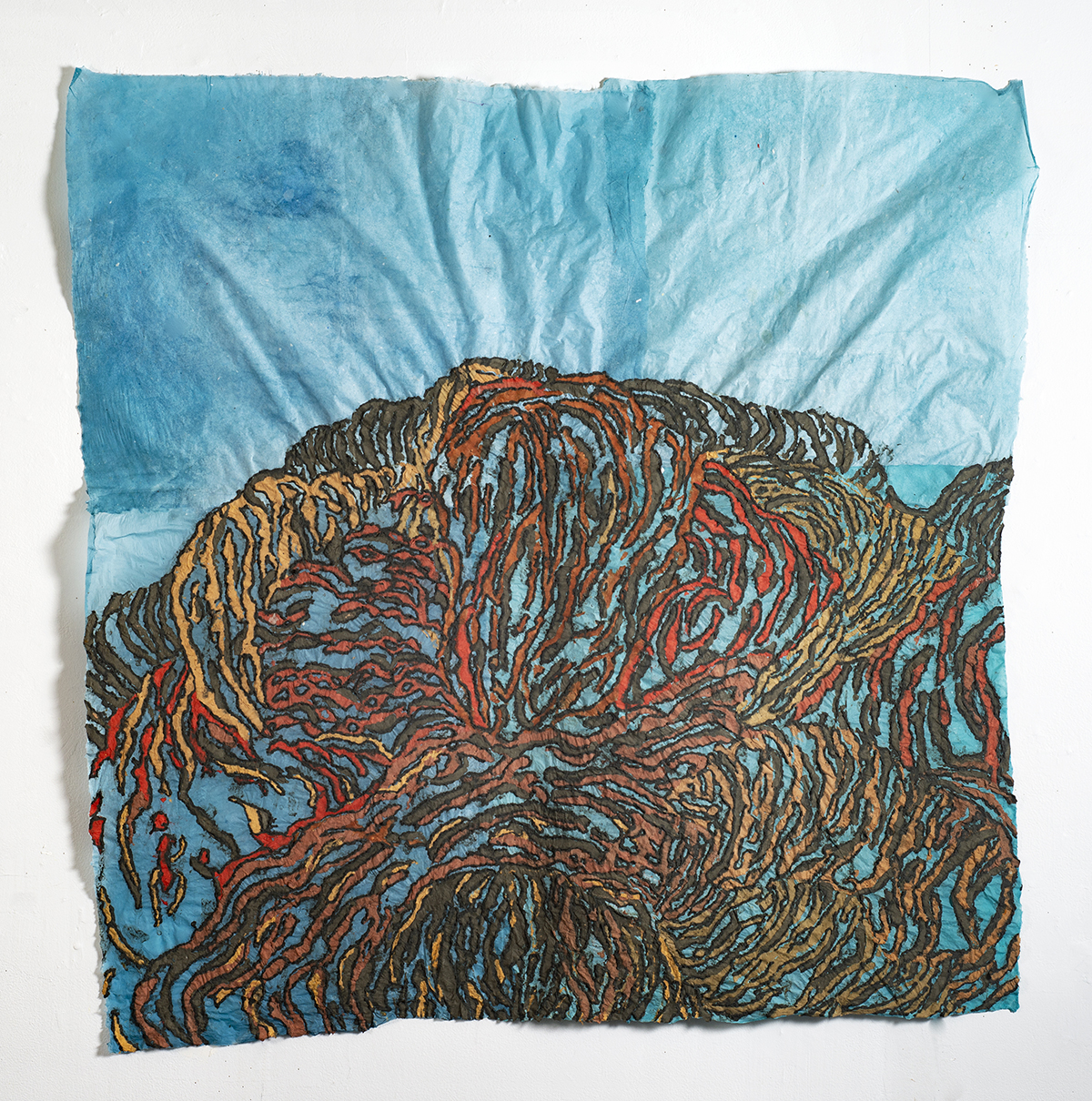
Nancy Cohen, Low Tide (2018). Paper pulp, ink and handmade paper. Dimensions: 44” x 44”. ©Nancy Cohen 2018.
Cohen captures Eastport’s competing environmental elements – both natural and man-made – in a series of two-dimensional and sculptural works. Her Low Tide image highlights the scale and subtle color variations of seaweed deposits. Evoking the tidal process that brought the seaweed ashore, Cohen tears handmade pigmented paper into thin strips. Then she layers the strips, while still wet, onto a flat sheet of background paper, allowing them to fuse with the background to create the design.
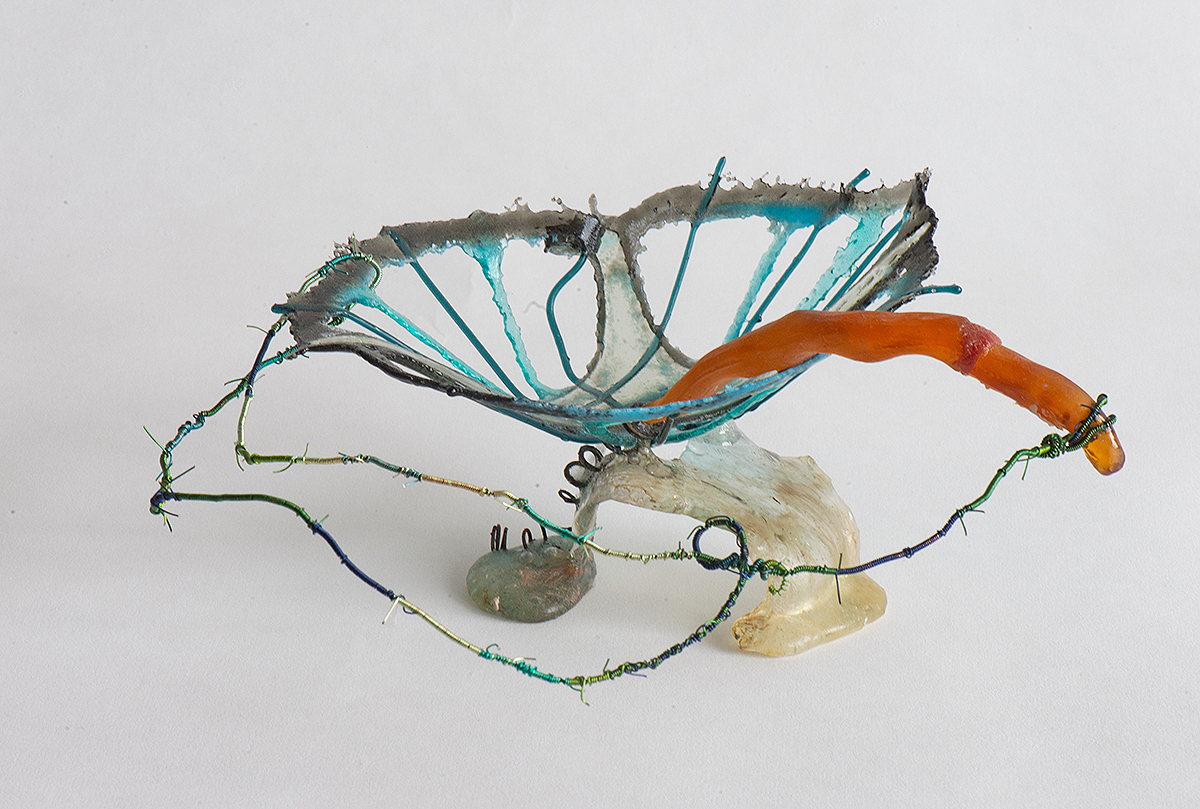
Nancy Cohen, Momentary (2018). Glass, metal, wire. Dimensions: 10” x 9” x 4”. ©Nancy Cohen 2018.
Cohen’s sculpture reflects the human presence in the tidal scene: she melds glass, metal and wire, some of it from material washed up on the tidal flats.
Samana Bay graces the northeastern side of the Dominican Republic, ringed by protected islands and mangrove-lined rivers. An eco-tourism destination, the locale boasts brilliant white sand beaches, spectacular rock cliffs, rolling mountains, lush rainforests, and pelican nesting sites. It is one of the world’s best places to view whales: its warm, calm waters attract 2,500 endangered humpbacks during mating season.
Descendants of freed African-American slaves maintain a unique – and flourishing – local culture with its own musical traditions. Tourism has increased, but the absence of a well-developed tourist infrastructure limits the number of visitors.
Yet this tropical paradise remains ecologically vulnerable. Overfishing, deforestation and pollution contribute to declines in fish populations and coral reefs. Water withdrawals for agricultural and municipal use threaten the integrity of mangrove forests. Climate change poses additional threats to sea levels and estuarine salinity.
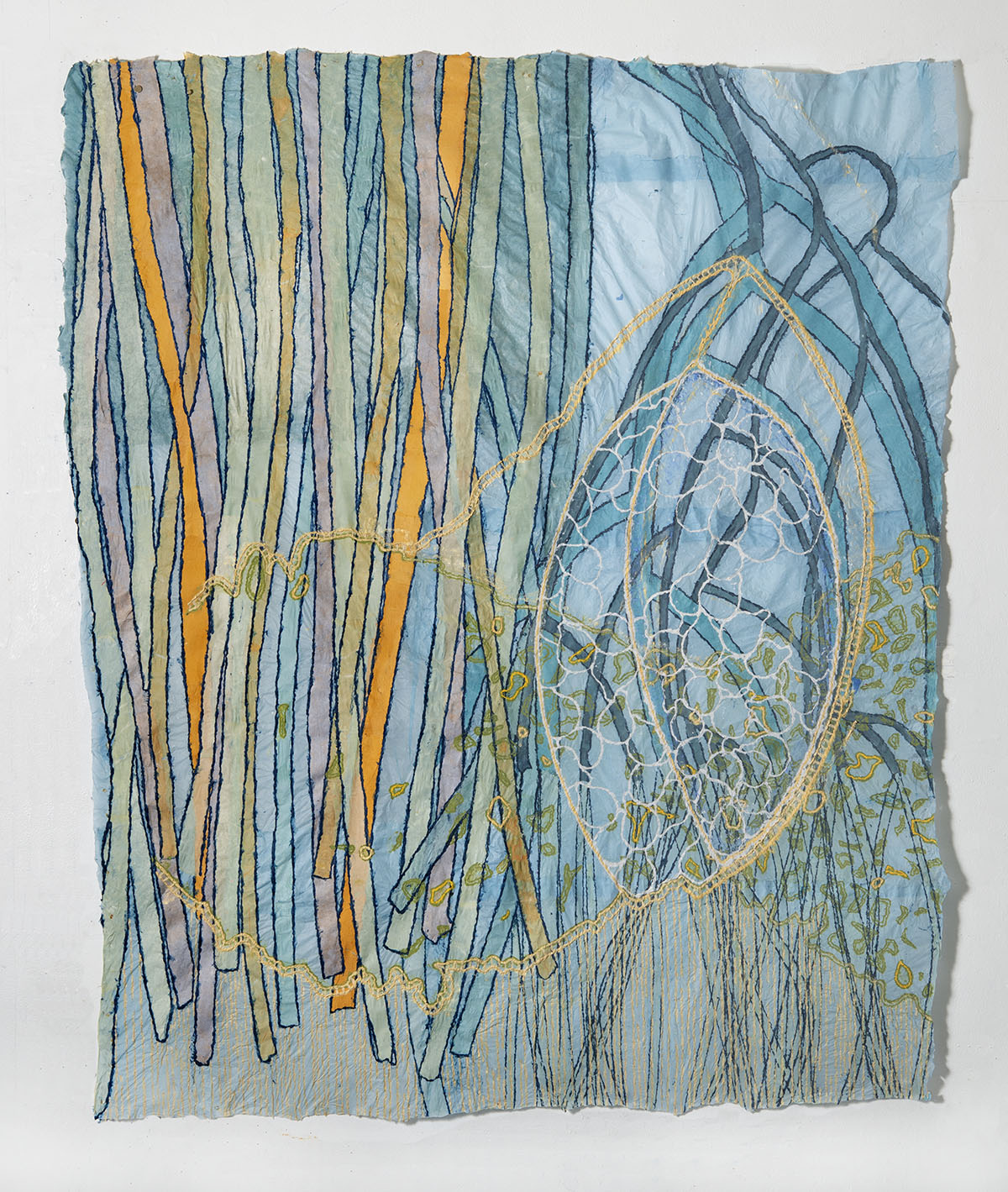
Nancy Cohen, Scrim (2019). Paper pulp, ink and handmade paper. Dimensions: 52” x 45”. ©Nancy Cohen 2019.
In Scrim, Cohen focuses on the majesty of the mangroves, offering two views: the bark that supports the mangrove’s towering height and the tangled roots that create a thriving habitat for myriad species. A lacy white foam on the mangrove roots piques our curiosity: is it naturally occurring or human-caused (perhaps the remnant of a fishing net or evidence of an oil leak)?
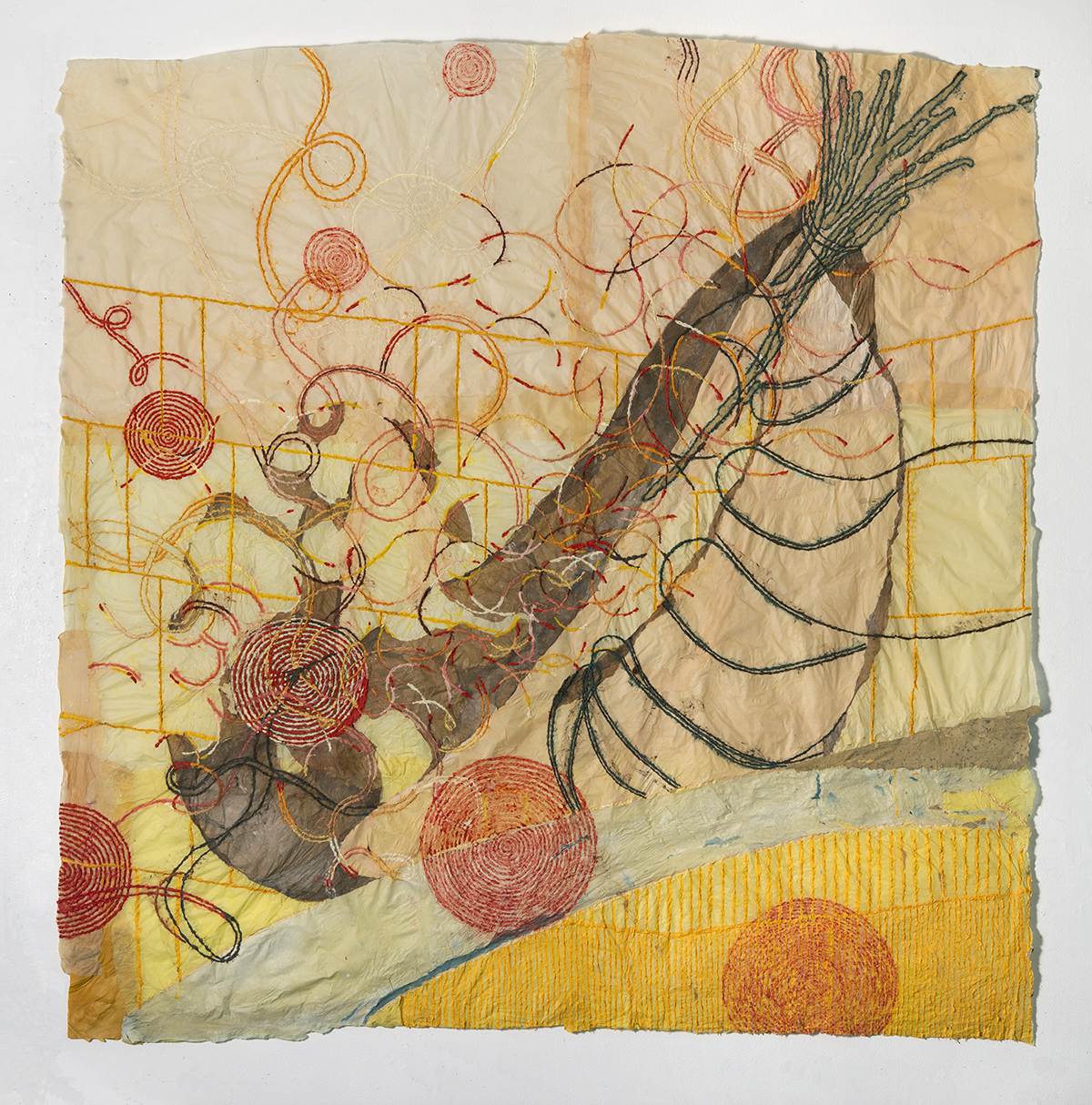
Nancy Cohen, Public Market (2018). Paper pulp and handmade paper. Dimensions: 52” x 52”. ©Nancy Cohen 2018.
Public Market captures the sunny colors and vibrant energy of the local community market – a reminder of the people depending on the Bay’s abundance.
Collectively, Cohen’s works evoke the special qualities that make these landscapes so attractive to humans, while hinting at the human imprint threatening their existence.
All four works and others from this series are on display in Forces: Observations from the Interior, an exhibition at the Kathryn Markel Gallery, 529 West 20th St, Suite 6W, New York City until May 4, 2019 and online. This work has been supported in part by the STUDIOWORKS/Tides Institute & Museum of Art and by Ninth Wave Global.

